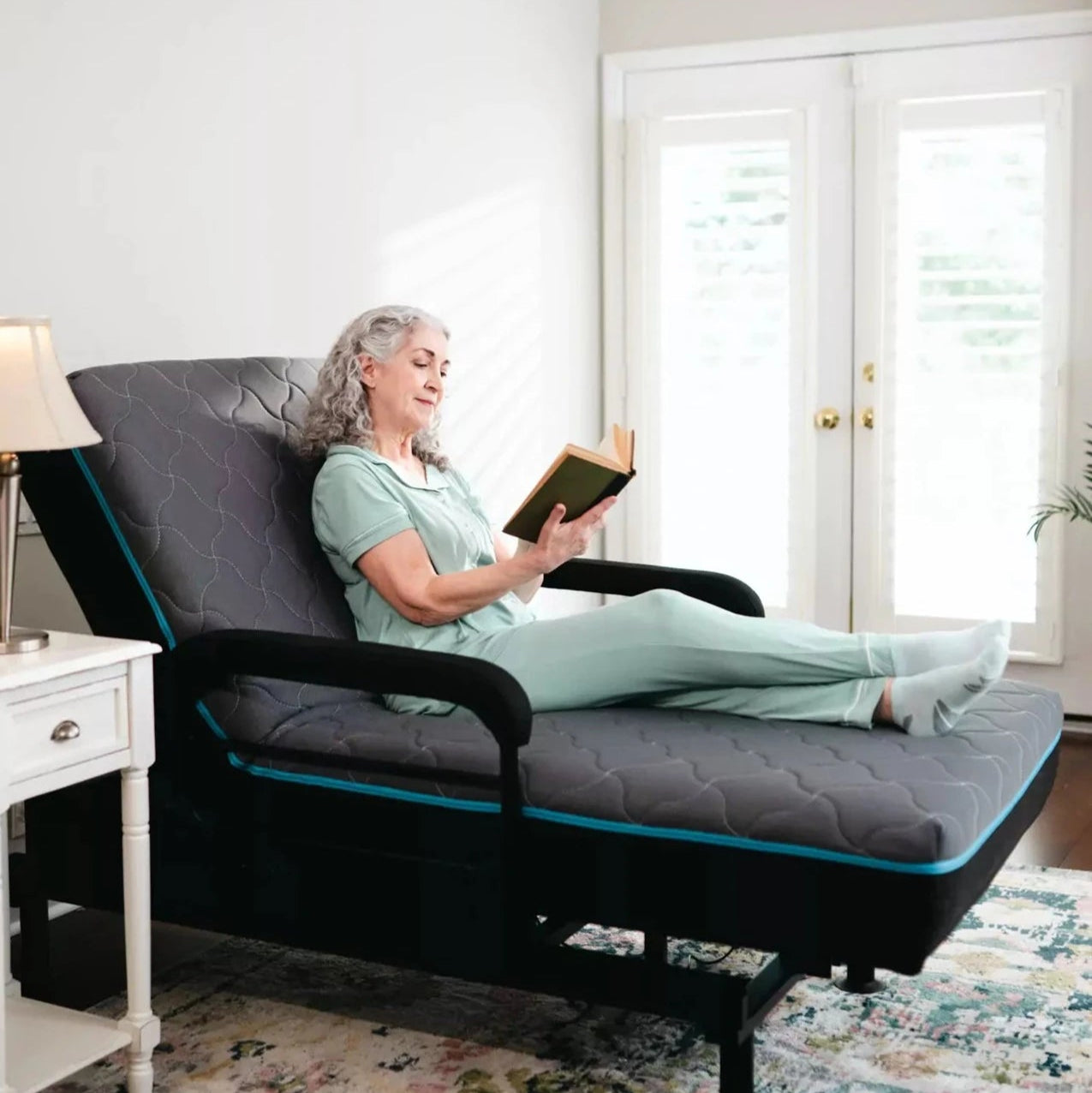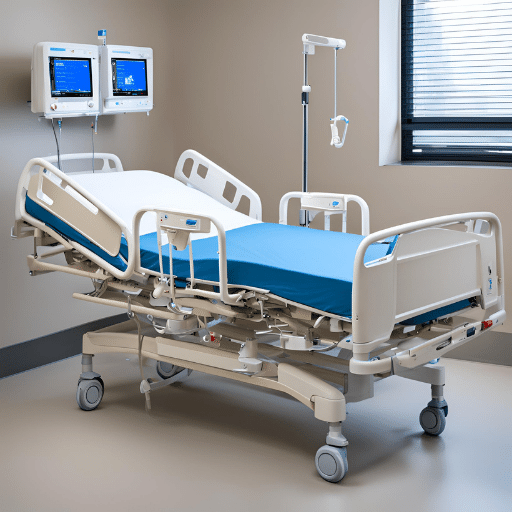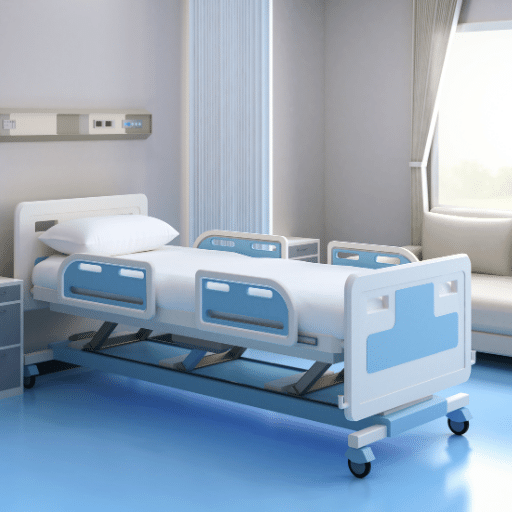The Main Principles Of Hospital Beds For Home Use
Wiki Article
All About Hospital Beds For Home Use
Table of ContentsSome Known Questions About Hospital Beds For Home Use.Hospital Beds For Home Use Things To Know Before You BuyRumored Buzz on Hospital Beds For Home Use9 Simple Techniques For Hospital Beds For Home Use3 Easy Facts About Hospital Beds For Home Use ShownThe Single Strategy To Use For Hospital Beds For Home UseHospital Beds For Home Use for Dummies
There are 3 primary kinds of medical facility beds: handbook, semi-electric, and fully-electric. These beds utilize hand cranks to adjust the bed's height and increase and reduce the head and the foot.
Semi-electric beds have an electric motor to increase and lower the head and foot sections of the bed. Individuals and caretakers change the placing by pressing buttons utilizing a hand pendant. The height of the bed is changed manually with a hand crank. Full-electric beds have an electric motor that can increase the head and foot sections of the bed as well as the entire height and positioning of the bed.
The 7-Minute Rule for Hospital Beds For Home Use
There are numerous types of health center beds, each developed to meet details client needs. Below are some usual types: This is the most typical type of health center bed, developed for general clinical use.Lower to the ground than a common bed. This kind of bed is made for larger people, with a wider frame and higher weight ability than a standard bed.
This type of bed is designed for critically ill individuals that require open monitoring and specialized clinical tools such as ventilators and infusion pumps. This type of bed is designed for use during labor and shipment, with flexible placements and attributes to sustain the mother and baby during the birth process.
Hospital Beds For Home Use Fundamentals Explained
Several function and the accessories carry out increasing grip to different components of the vertebra and the extremities without moving the body. These are just a few examples of the kinds of hospital beds available. The details sort of bed utilized will depend on the person's problem, medical requirements, and various other aspects.Right here is the thing you need to recognize. A one-function health center bed is a clinical bed that enables a client to relocate only the head or foot area up or down. A 2 function healthcare facility bed commonly refers to a kind of clinical bed that has two flexible functions to assist patients in hospitals or treatment facilities.

Some Ideas on Hospital Beds For Home Use You Need To Know
A 7-function ICU bed is a type of clinical bed that offers numerous flexible features to sustain seriously unwell patients in an intensive treatment system (ICU) (hospital beds for home use). The 7 features generally include: Backrest adjustment: The backrest can be adjusted to different angles to assist the patient sit up or relax comfortablyHeight modification: The bed can be raised or lowered to make it simpler for clients to enter and out of bed, and for caretakers to offer treatment. Trendelenburg placement: The whole bed can be slanted to advertise blood flow and flow in the body. Reverse Trendelenburg placement: The bed can likewise be tilted in the opposite direction to advertise blood circulation and flow in the upper body.
1. What Size is a Health Center Bed? 2. Just how much Does a Hospital Bed Price? 3. Why Do Health Center Beds Have Side Bed Rails? 4. What Are The Key Hospital Bed Components?. While even more budget friendly than electrical versions, these beds need physical initiative for adjustments. The major advantages of manual beds are their price and integrity, as they don't count on electrical energy. Nonetheless, the requirement for manual initiative can be a restriction in situations where fast modifications are essential or where caretakers deal with physical challenges.
The Facts About Hospital Beds For Home Use Revealed
Semi-electric medical facility beds provide an equilibrium of guidebook and electric controls. These beds provide a suitable center ground in between guidebook and totally electric alternatives, supplying look these up simplicity of use without the full price of electric designs.Semi-electric beds are appropriate for individuals that require modest modifications to the head and foot areas but can take care of without regular height changes. This makes them an affordable service for those looking for comfort and benefit without the requirement for constant repositioning. Totally electric health center beds feature electric controls for smooth adjustments to the height, head, and foot sections.
Specialized hospital beds, such as ICU beds, lasting care beds, and bariatric beds, are carefully designed to deal with specific clinical requirements. These beds provide customized care for diverse client groups, enhancing both outcomes and comfort. In the complying with areas, we will explore the main kinds of specialty medical facility beds, outlining their details benefits and applications.
With years of experience in making electrical direct actuators - hospital beds for home use and close cooperation with the healthcare sector, TiMOTION is well-positioned to supply trusted health care solutions. Our up and down incorporated company handles every action of the manufacturing process, from layout to actuator assembly, guaranteeing we deliver outstanding value and personalized services tailored to your certain requirements
Hospital Beds For Home Use Fundamentals Explained

To find out more about incorporating these innovations right into your products, call us today. Additional analysis:.
Information is sourced from the Medicare Cost Report.

The Greatest Guide To Hospital Beds For Home Use
A medical facility bed is a bed developed specifically for clinical objectives. It is not just an area for individuals to rest, yet also a system for clinical operations. Unlike regular home beds, healthcare facility beds generally have flexible functions, which can facilitate clinical team to make numerous modifications according to websites the needs of patients, such as changing the elevation, inclination, and assistance angle of the back and legs of the bed.Report this wiki page